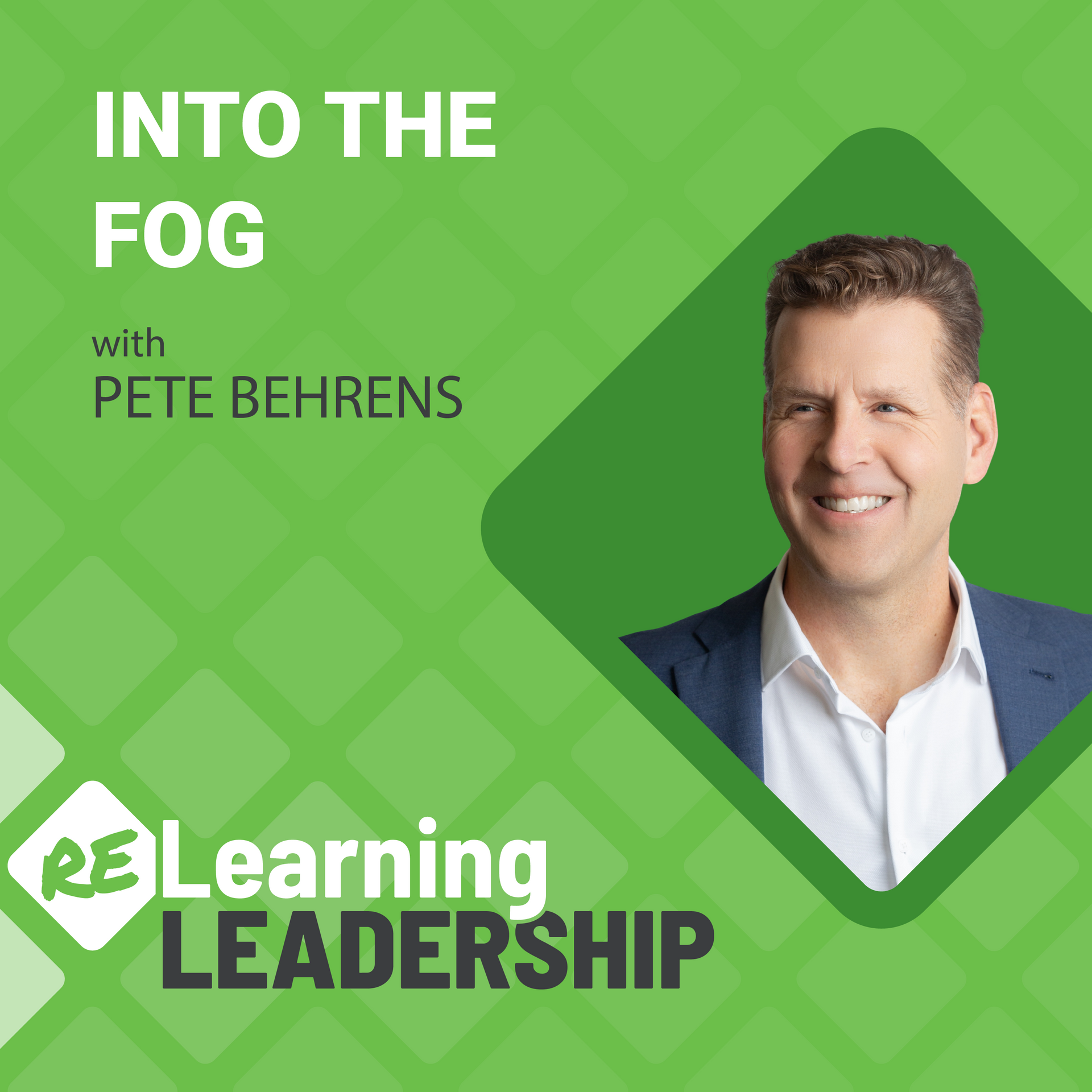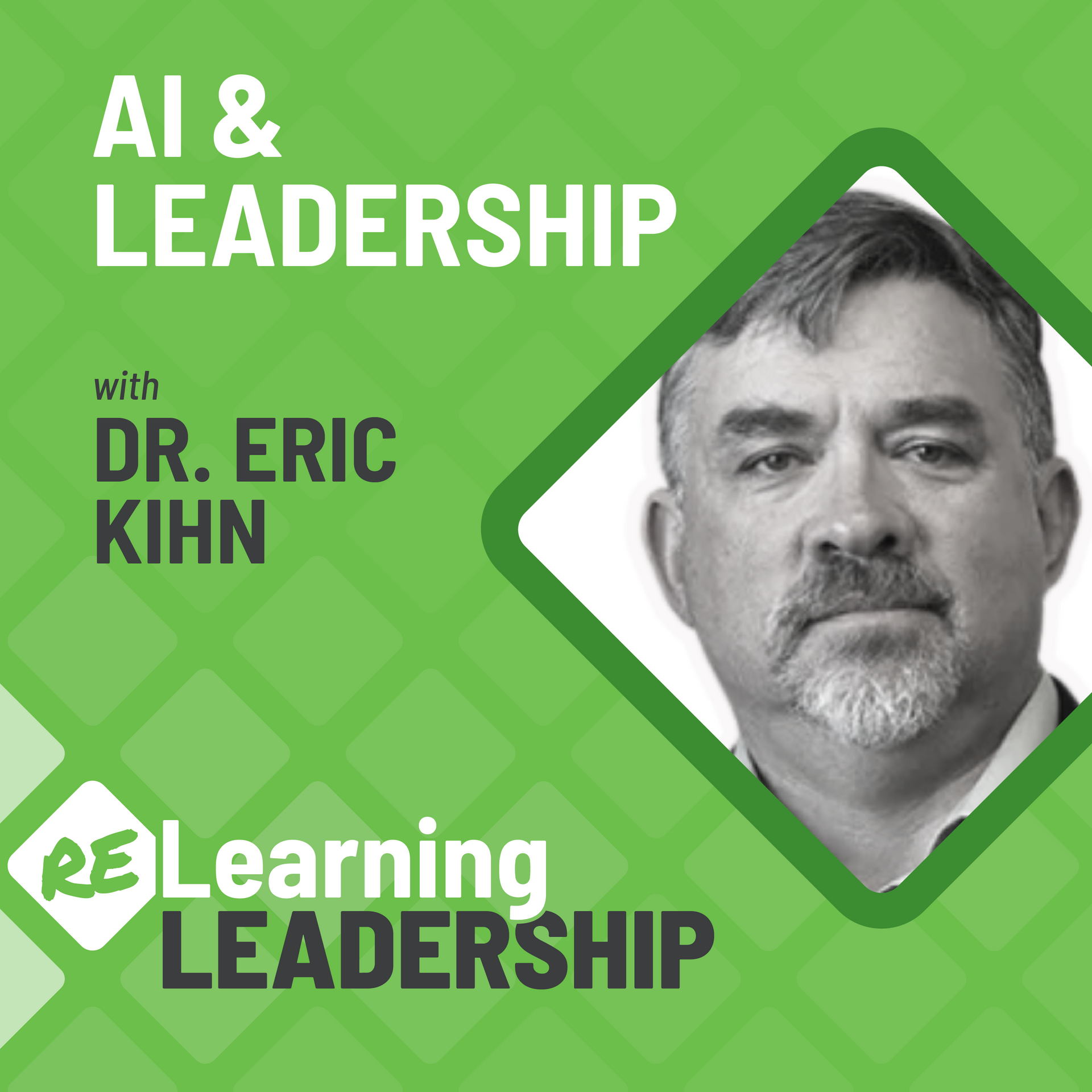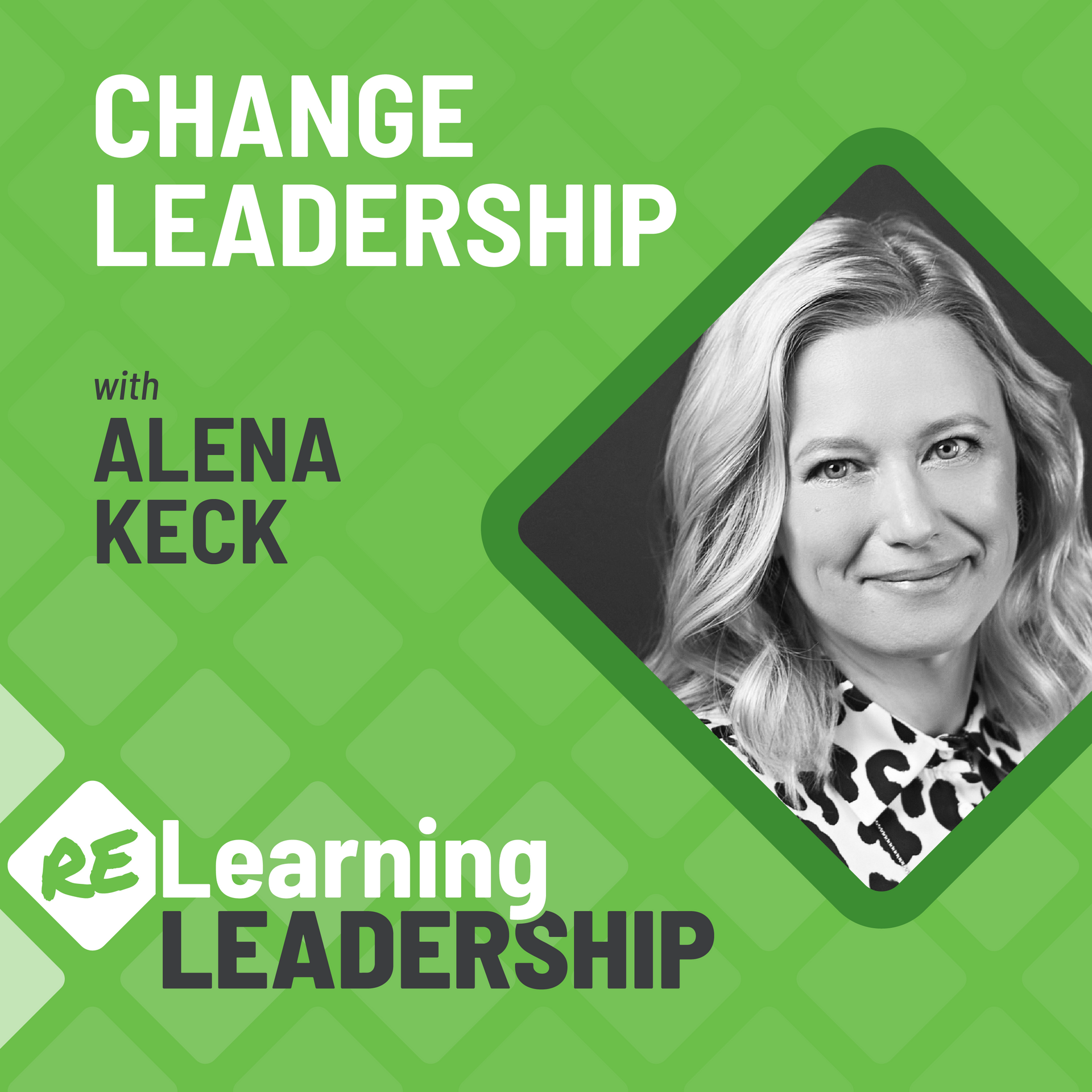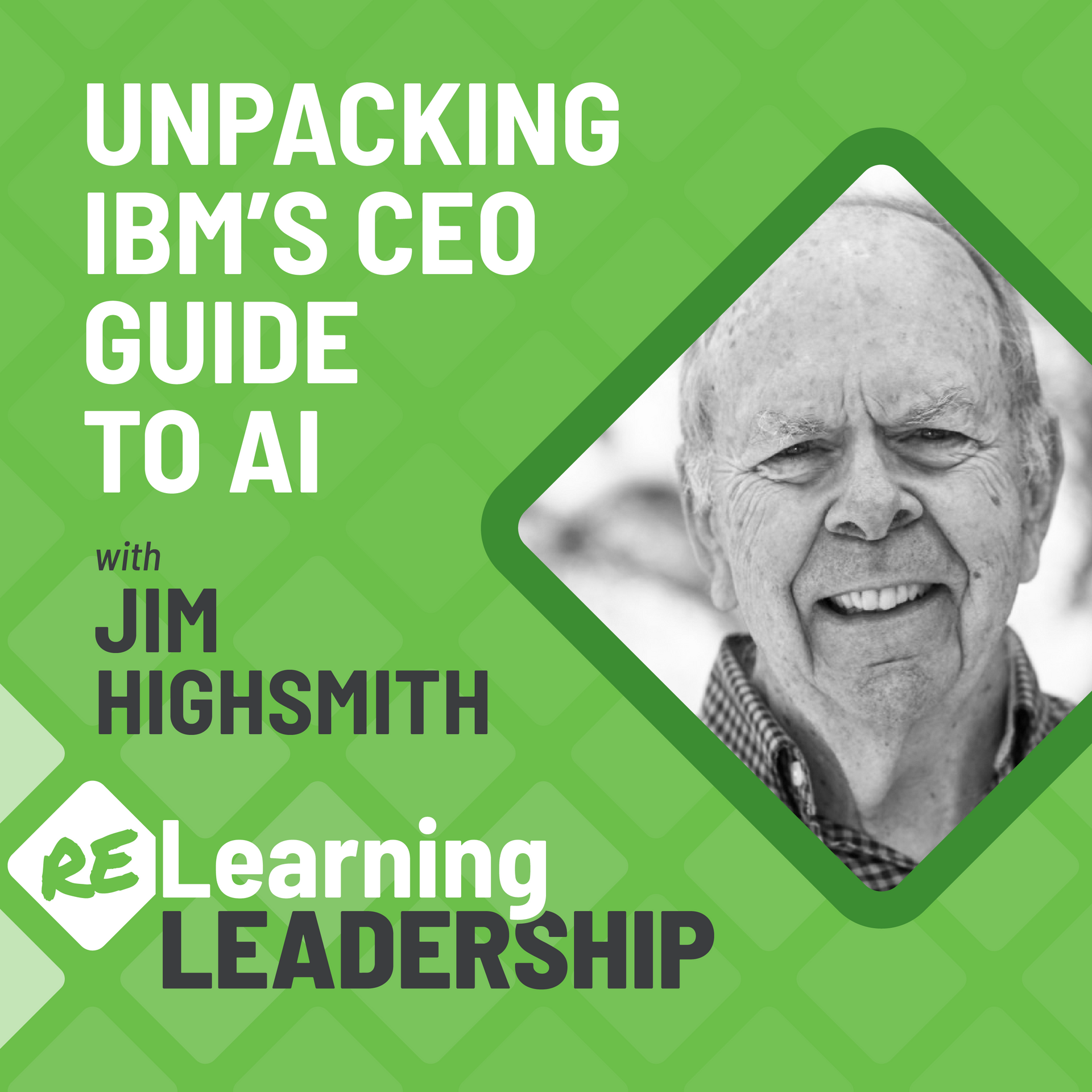17: Learning to Let Go, and...
Why leaders need to learn to let go, and why letting go is only half of the story.
Jon Christensen, founder and president of Kelsus—helping startups build products, shares his leadership journey and stresses the importance he learned in letting go in order to grow as a leader.
Brad Swanson, leadership and organizational coach, interviews Jon and discusses with Pete on what all leaders can learn why and how to let go in order to become better leaders, only to discover that letting go is only half of the story! Listen to hear the rest of the story!
Jon Christensen, Founder & President of Kelsus, Co-Founder of Timber
Jon Christensen is founder and president of Kelsus where he has helped startups define and build their products for the past 14 years. During this time, Jon has grown the engineering team at Kelsus to 40 developers and taught the always-remote team the delicate art of balancing between speed and build-quality for the limited timescales and budgets of software startups.
This tension between opposing forces is a big theme in Jon's life as he balances building a thriving company with living a rich family life in the mountains of Colorado. Though, he's quick to say that, no, he's not always on the slopes when he doesn't answer his phone.
Just as enjoying time outdoors, doesn't rule out building a successful software business, neither does having startup timescales mean startups should move fast and break things. Jon is proud that the software Kelsus builds has scaled predictably as clients have grown and has continued to operate reliably in the much bigger cloud environments of their acquirers.
Jon is also the co-founder of Timber, a software company creating the building blocks for great podcasts. (Re)Learning Leadership host Pete Behrens has joined their podcast creator community to creatively interact with other podcasters and podcast industry experts.
Connect with Jon
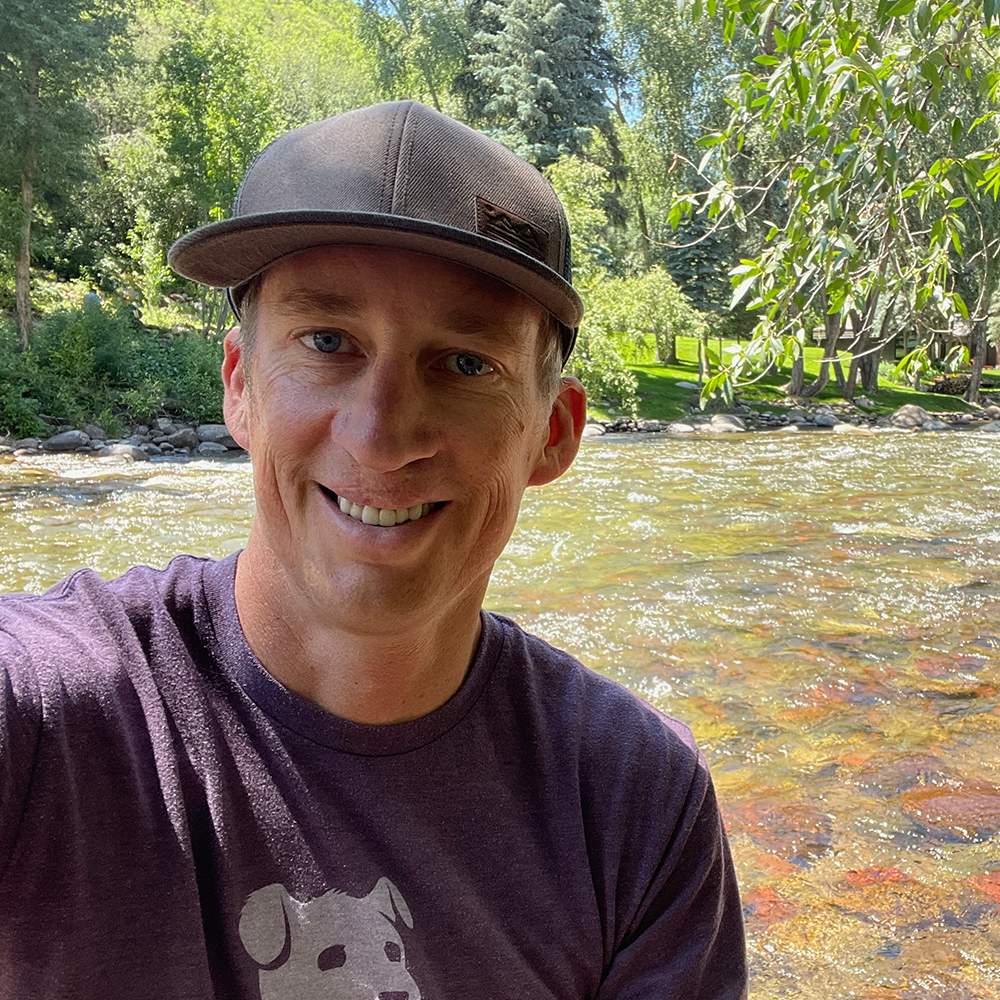
Brad Swanson, Leadership and Organizational Coach with Agility 11
Brad Swanson is a Leadership and Organizational Coach, and founder of Agility 11. He guides companies to achieve sustainably better results using Lean & Agile principles. Read more >
As an Agile Leadership Journey Guide, Brad facilitates several programs in our curriculum, including Applied Agility in Leadership and Certified Agile Leadership.
Connect with Brad
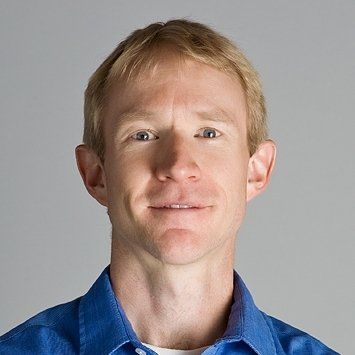
(Re)Learning from Jon's Story…
I really enjoyed Jon’s accidental leadership journey, in some ways as a parallel to my own, that I explored in our first episode of this season, I Wasn’t Born a Leader. I also appreciated Brad’s influence on Jon in helping build that trust he needed to become a better leader.
So, what can we take away from Jon’s story?
First, we need to shed the expert mindset. Most of us enter leadership in an area of expertise. And it isn’t the expertise that limits our growth. Rather, it’s holding onto the expert mindset, that we know best or we can do best, that keeps us back. So, unless we can let that go, we have no path to better leadership.
Second, we need to shed the achiever mindset. We heard Jon describe his letting go in two phases: first, letting go of the work, then letting go of directing the work. The achiever mindset holds onto the ownership of the results, which prevents others from truly staking a claim. If we want empowered employees, we need to let go and let them own it. Completely.
And finally, we need to embrace a catalyst mindset. Letting go is only half of the equation. We need to learn to support the people we empower and create space for them to grow. We also need to refocus our energy toward the organization itself, or, like in Jon’s case, starting something new, like a podcast company, Timber.
We Celebrate Joy Zimmerman’s Milestone
Joy Zimmerman, the creator of the music you hear on this podcast, is celebrating an award-winning album this summer. The Canvas Before Us reached Top #8 on the International Folk Chart!
Visit Joy Zimmerman Music
For this episode, her track Light the Stage jumped out to me in connection with Jon’s story. While there are many connecting verses, the line that struck me: “You promised me the spotlight, but you won’t light the stage” depicts perfectly the challenge all leaders face in letting go.
Enjoy Joy Zimmerman’s Light the Stage.

Episode Transcript
Pete Behrens:
Why do leaders need to learn to let go?
Welcome to another episode of Relearning Leadership, where we explore a specific leadership challenge and break it down to help improve your leadership, your organization…and even your personal life.
Today, we meet Jon Christensen, an innovator learning to let go in order to become a better leader.
Jon Christensen:
Just go do something else. Go work on something that is going to let the person that's supposed to do this new leadership job do the job without having to ask you every five seconds if they're doing it right.
Pete Behrens:
Speaking with Jon is Brad Swanson, one of our leadership guides who has collaborated with Jon for many years.
Brad Swanson:
I think that was that moment of insight where he realized if he were going to grow as a leader—if the organization was going to grow, he would have to develop that trust and step back.
Pete Behrens:
Following Jon and Brad’s discussion, I sit down with Brad to explore what we can relearn from Jon’s story, discovering that letting go is only half of the equation.
I’m Pete Behrens. Let’s listen in to Brad and Jon.
Brad Swanson:
I'm excited to be here today with Jon Christensen. Jon is the president at Kelsus, which is a software agency, and co-founder at Timber, which is a podcast hosting company. As you might guess, Jon is definitely an entrepreneur, and we're going to explore his journey as an entrepreneur today. Welcome Jon!
Jon Christensen:
Yeah, thank you Brad! Good to be here.
Brad Swanson:
Jon, tell us what should our audience know about you and Kelsus and Timber?
Jon Christensen:
Sure. So, I started Kelsus not out of a desire to start a software consulting company, but just because I wanted to get married and go live abroad. It was kind of pre-everything could be done remotely. So, I did know how to do software development. And I went off and did that by myself. And slowly, but surely, built a software consulting business, kind of by accident. I kept trying to do other product companies and being like,
“Well, this consulting business is doing pretty well, so maybe I should go back and focus on it some more.” And over the course of 13 years, 14 years almost, we built up a nice little company.
Brad Swanson:
Great. What would you like us to know about Timber?
Jon Christensen:
Well, you know, we did a podcast as a way to sort of gain credibility and build our consulting brand. And as we did that podcast—it was called Mobycast, we thought,
“Maybe we should build some software, you know, productize some of the things that we'd like to see in the podcast hosting side.” And so, that's what Timber is:
a podcast hosting company that hopefully will help people not just host their podcast, but get better at podcasting. It's really not for new podcasters, it's more for people that have been around a little bit and want something a little bit more out of their podcast hosting.
Brad Swanson:
I thought I'd focus on Kelsus first. You went from being on your own to ultimately hiring a good number of people. Tell us about that journey.
Jon Christensen:
Sure. You know, it was not even my decision. It was kind of put upon me. Because a client asked if I could go from Uruguay to northern Argentina to help them hire a team. So I went over there and found a few people that were connected to the university in this small town called Resistencia. And those people ended up being people I worked with on a project for that client, until the client basically didn't need them anymore. And they asked if they could keep working with me after they were done with that client. And those same people are still involved in Kelsus and still helping us grow the team larger and larger. We're up to about 40 people now.
Brad Swanson:
You probably never imagined to yourself, “Hey, I'm going to go to this small town in northern Argentina, and I'm going to find a bunch of software engineers.”
Jon Christensen:
And I think that that—in a way, it kind of stunted our growth a little bit at first. Because I wasn't confident in my own leadership early on, and I wasn't confident in my ability to sell their skills as something that you can rely on to our clients in those first few years. So, I remember doing things like sharing GitHub accounts so that the GitHub check-ins would have my name on them. And tried to keep the fact that there were other people working overseas out of the picture, almost, like, a little dishonestly in the beginning. It quickly turned out that this is just so hard to do—you can't really pull that off. I ended up reviewing all of their code, every single line of it at first. And I was just doing the job twice. I was not actually expanding my own ability to get things done because I felt responsible for every single line of code that other people were writing. So I had to let go of that and start to trust them and start to trust my own ability to say,
“Hey, there's other people that are going to be working on this. They're great.” So, it was a bit of a leap of faith to say that to prospective clients. But it turned out that I never really got any questions about that. Everyone was like,
“Oh, okay, that sounds fun!”
Brad Swanson:
So, I'm hearing, sort of, the classic case of expert leadership initially there, where you were hands-on. Not only the day-to-day, but even the hour-by-hour. And it sounds like you realized at some point that was not going to be scalable or sustainable. You mentioned learning to trust others. Could you tell us more about that? How did you, sort of, move beyond being the expert behind-the-scenes to letting other people step up?
Jon Christensen:
Well, I think you hit on it. In part, it was just a matter of necessity. It was like, you know, on the one hand, people were just going to find out that it wasn't all my code. Like, there's just not enough time in the day. You can't hide that forever. So they did find out. And then as soon as they did, yeah, they did ask questions, like,
“Why aren't there null checks here? Why is this this way? Is this trustworthy?” But then we would address that. We would say,
“Oh, let's fix that for you.” But, yeah, after seeing a few wins that I wasn't involved in, where other people wrote the code, it got checked in, it became part of the product that we were building. Like, that just created trust. I just was like,
“Okay, they can do this, and I only need to check some things. I don't need to check every single thing.” And as soon as I could trust other people to do the work, then we could do more work.
Brad Swanson:
So, we heard about how you grew from one to many. Tell us, how did you develop your relationship with this team when you were working remotely?
Jon Christensen:
I think when you are working together on something, when you have a common goal and you are talking about the things that you're trying to get done, relationships just form. I was just saying this the other day. Like, it's one thing to form a community just by trying to have people chat with each other about topics that they're interested in. But it's another thing to form a community when you work together and try to get stuff done. It just happens; you have to connect and talk about the things that you're trying to do. And then, I guess, the last thing is, money talks. I knew how much they had requested to be paid from our original client. And so, I was like,
“How about I double that?” Because they were not getting paid that much by that original client. And it was still very affordable. And I think that being a little bit generous and understanding that good work should be paid for well—we all agreed on that. Everyone's like,
“Yep, we're on the same page there.” So that was good.
Brad Swanson:
And I know that you've got a very loyal team. Most of your original team members are still with you today. Is that correct?
Jon Christensen:
Yeah, quite a few of them. We have lost a couple original team members that—one moved off to Spain; another moved off to Ireland. But, yeah, if they're still living in Argentina, they're still with us. It's been really incredible. We're so fortunate. I mean, thirteen years of working together—it's unbelievable. That doesn't happen.
Brad Swanson:
Yeah, especially in the software space. The average tenure of a software engineer at a company is pretty short.
Jon Christensen:
Thirteen months. Past that year mark, vest your first year of options, and move on to the next one.
Brad Swanson:
Right. So, I'm hearing one piece of it here is being generous and paying people well, so that money's off the table. Beyond that, what other things have you done?
Jon Christensen:
Yeah. I would say, one is that we've done almost all of our promotion from within, in terms of managing projects, managing customers, managing the team—we've done that internally, and we've just developed those people. So, once we notice that somebody's got an opinion about a lot of things and wishes that they were done differently, that's like,
“Oh, you might be interested in helping and lead us! Like, is that something you want to do?” And, usually, the answer has been 100 percent yes, every time. And then we just support them, again, via Slack and via having one-on-ones, where we tell them,
“This is how I would approach these types of situations”, just to directly teach those new leaders. And then the other thing is—the big thing, I think, that's pretty unique—is that we've gone on a yearly retreat, except for during COVID, where we all get together, hang out on the beach, and learn about software and play football. And, like, crazily walk into restaurants with 40 people strong, saying,
“Can you seat 40 people for us tonight?”
[Laughs]
Brad Swanson:
“Sure, five minutes!”
Jon Christensen:
And they're like,
“Yeah, we gotcha!” It's a special thing that you can do in Brazil because they have a lot of—like, the word that's coming to my mind is
free fork, because
tenedor libre is the word in Spanish. But, like, buffets. Yeah.
Brad Swanson:
Great. That sounds like something that not a lot of organizations may do when they have geographically-distributed teams. How much do you think that's impacted the culture?
Jon Christensen:
Oh, so-much. I mean, there's inside jokes that live on on Slack, from those retreats. I mean, we invite people's families. I think that that's something that's specific to the culture in South America. I don't think I would do that with a team in the United States. But in South America, it's like,
“Oh, yeah, I definitely want to bring my family, and I definitely want my family to know my co-workers’ families.” It's a really unique thing, and it's really cool to see it actually work. And now my kids are friends with kids of our team, which is really cool.
Brad Swanson:
It sounds like the national culture has had a big influence on the company culture, and some of those cultural strengths have become cultural strengths of the company as well. You talked a little bit about how your leadership had to adapt as you grew. Can you tell us more about that? What else have you had to adapt?
Jon Christensen:
I think there was another phase where it was letting go of leading a project. For a long time, I was in charge of every project, even though I wasn't even really writing any code. I was still
the face of the company from sales to delivery, and I wanted to make the shift where I could still be the face of the company with sales, but the delivery team could be entirely different. And, again, it was about identifying people that I felt like our customers would feel comfortable with. There's a guy named Raul, in particular, that, I think, was the first person in Argentina we did this with. You know, it was like, “Raul, can you own this project? Can you own the entire outcome of this project, where I don't even go to weekly meetings. If the customer has a problem—absolutely, like, I'll be happy to have a meeting with them, but, otherwise, it's yours.” And before we did that with Raul—you know, Brad, you did that, too. It was interesting because I knew you had experience doing that, so I felt comfortable saying,
“Yep, this new customer is yours to live or die with.” But with Raul, who I had known since he had, you know, basically graduated college, it was a bigger leap, it felt like. Like,
“Can you handle the entirety, you know, this huge piece of revenue for the company?” And not only,
“Can you handle it—like, making sure that that customer is happy—but try to expand? Can you get more work from this customer? That would be ideal.” And, sure enough, he was able to do it. And it was really just telling him in direct words,
“This is what I want you to do. I want you to own this entirely and try to grow it if you feel like it.” And that's what he wanted to do. And after I said those words, I really didn't have to ever say anything again. He just did it.
Brad Swanson:
You're
finding people that have made it clear that they're very much interested in having this leadership role. And you've given people very clear outcomes and then letting them go for it. I'm curious if there's more to it. Was there some mentoring or other sort of guidance that you provided along the way?
Jon Christensen:
I think one of the ways that helps leaders really let go is to just go do something else. Go work on something that is going to let the person that's supposed to do this new leadership job do the job without having to ask you every five seconds if they're doing it right. And that's all the way up and down the chain, whether you're a leader of leaders, or whether you're leading somebody to take over code for you for the first time. Like, letting them have at—And just being busy on something else seems to be the best thing, for me, anyway.
Brad Swanson:
I'm curious to know how you identified people that you see potential to be those leaders?
Jon Christensen:
So, for me, leading is about communication. And it's about saying things in a way that other people understand. So, if you're really tuned into that, if you really pick up on how people say things and whether or not other people are understanding things, then you'll notice when other people have that skill, too. And those are the people that I think work the best as leaders.
Brad Swanson:
So, if you're not spending that time hands-on as an expert, tell us more about, as a leader, how are you investing your time?
Jon Christensen:
Yeah, my answer is going to be kind of ridiculous. So, I started another company. I had enough free time on my hands where I was like,
“Well, I could just try to make this one grow faster.”
But it wasn't my favorite kind of work, like, finding more clients and then managing them and then finding other people to manage them. I can see the horizon there, what that looks like, and it was—you know what? The truth is—I have a chip on my shoulder about having a product company. I gotta do it. I have to make it successful, so I freed myself up enough to have enough time to do that. And so I've been focusing on that, and that is really a lot more individual-contributor work. Like, I'm writing a lot, and I'm doing marketing for that company. So I spent about half my week doing that. And the other half, sort of, between managing and getting clients for the consulting company and exercising and thinking about it all. I'm not really putting that much time into the consulting company, so I desperately hope that my clients are not listening to this.
Brad Swanson:
Maybe just to conclude or wrap up here: what are some of the key lessons you'd share with people in these growing companies in times of working remotely?
Jon Christensen:
Hm. Give people the full authority and responsibility to get done the thing that they need to get done. All the way. Like, this is yours. When it's done, you tell me that it's done. This is not a hot potato that we're going to pass back and forth until I tell you that it's done. And that's even more critical when things are remote. It's just really the, like, “This is yours. You own this.” If it's a new employee and they're just out of college or they're just not yet trained, then it might have to be a really small thing. But they just still need to feel like their performance lives or dies on whether they can get it done, whether they can figure it out. And, you know, always give them the option:
“If you can't figure this out, come back to me. It's no hard feelings. I will help you. But, like, it's yours.”
Pete Behrens:
Brad Swanson is a leadership and organizational coach, guiding companies to achieve sustainably better results using Lean and Agile principles. Brad joins me back in the studio to discuss his conversation with Jon. Welcome, Brad.
Brad Swanson:
Glad to be here, Pete.
Pete Behrens:
I enjoyed listening to your interview with Jon and was inspired by a few key insights from his story. I'm wondering what struck you the most.
Brad Swanson:
Jon described starting out where most leaders start out in expert leadership. He was very much involved, hands-on, day-to-day in managing the work that people were doing. He had this realization that he was doing the job twice. The people that worked for him did the job once, and then he had to do it a second time. I love his quote, where he said
“I had to let go of that and start to trust them.” I think that was that moment of insight where he realized if he were going to grow as a leader—if the organization was going to grow, he would have to develop that trust and step back.
Pete Behrens:
I loved how you picked up on that. And, you know, it’s a struggle for many of us. I want to feel valuable. I want to feel productive. I feel responsible. And so, it's such an easy attraction, especially if you're leading something you're good at.
Brad Swanson:
Most people that I've known, being promoted into leadership positions—they're promoted because they are the expert in that particular craft. And you're right. It's so easy to hold onto that as your lever as a leader. It's hard to step away from that and realize that you can get higher leverage if you are willing to trust others to do their jobs.
Pete Behrens:
I think most leaders would probably say, “Okay, this makes sense. Delegate work.” But what I really loved: what he said is, “No, truly let go! Like, like no, give them, fully, one hundred percent.” And I thought,
“What a great articulation.” But then he used the phrase, “It's not a hot potato!” And that one really jumped out to me. This isn't just,
“Okay, try this. Give it back. Try this. Give it back.” It's a
real let-go. And just how far you need to go with that mindset.
Brad Swanson:
Yeah, that struck me as well. And along with that, what he offered was to be there as a mentor if people needed it. It wasn't purely,
“I'm gonna let go of this and walk away, but I'm going to empower you with complete ownership. And I'll be here to mentor you if you need it, but I'm not going to step in and interfere.”
Pete Behrens:
That brings up a really good point. And I know we talk a lot about polarities. And one of them is
“Do I dive in, or do I let go?” And that's a polarity a lot of leaders, I think, swing the pendulum too far.
“Okay, we let go, I delegated, but now I feel a loss of control. I don’t know what they’re doing or how it’s going.”
We
talk about this in terms of the balance to engage without micromanaging. It's really a hard polarity—to find that balance. What are your thoughts, Brad?
Brad Swanson:
Yeah, I like that idea of the polarity. Or, another way I think of it is a healthy tension. Again, that we don't go too far to one extreme or the other. Empowerment is not only about giving things up. If you think about that word,
empower; it's giving power to people. And sometimes people actually need some guidance along the way. And you can do that without interfering in the work, without taking away the other person's ownership.
Pete Behrens:
He said there's two parts to delegation. One is: get them to the point of being able to delegate. And he shared how he curated and developed his people. But then he also said,
“Go do something different, yourself!” And I thought,
“What a really great insight!” If you're still there, hovering, asking questions, that's a form of micromanagement. Just go do something else! Get out of the way! And I think that's, to me, one of those, “Oh, duh!”
Brad Swanson:
Yeah, yeah. Very true. And, you know, Jon and I have worked together, which you probably figured out from the interview. One of the things we both talked about a lot was how we can spend more time
on the business, rather than in the business. As leaders, what can we do deliberately, as you said, to work on things that have higher leverage? More about helping to improve the system, the organization, cultivating the culture, and less time in the work, in the deliverables or the projects.
Pete Behrens:
Okay. So if I'm not going to do the work, maybe I focus on coordinating the work, or sales and marketing around the work, or project management. But then he got into a second phase of letting go:
“So if I'm going to give up coordinating the work and the project management, what do I focus on?” And what you're suggesting here is—we should be focusing on the organization itself, the people, the system, the culture. Is that a good way to think about it?
Brad Swanson:
Yeah, absolutely. This is where I think systems thinking is really powerful. As a leader, take that step back. Widen your gaze to look at the larger organization and even those invisible cultural forces
that are driving behaviors.
Pete Behrens:
One of the things that wasn't really talked about too much is what that does to the other person, how that helps those that are being delegated to. Do you mind touching on that?
Brad Swanson:
Yeah. I think a very useful model that I like here is what Dan Pink describes as the three things that motivate people. Purpose, autonomy, and mastery. So letting go is not just stepping back but starting with purpose, helping people to understand what is the goal or objective that you are delegating or handing off to them. The autonomy, of course, is that
letting go part and giving full ownership to the other person. The third part, the mastery. Again, that mentoring stance as a leader. Sometimes they need guidance, sometimes they need help. So being there to help them in their own learning journey is where leaders can have an impact without being there day-to-day and interfering in the other person's ownership.
Pete Behrens:
And what better way to develop mastery than to have full responsibility of something. And probably then screwing it up and learning I did it wrong. I think the best way to learn is, truly, just dive in and have to be responsible for it.
You mentioned you worked with him. And, you know, one of the things I was reflecting on was how much of Jon's leadership journey appeared accidental. He got into leadership accidentally. He starts managing projects accidentally. He starts an Argentinian team accidentally. And I thought, “Wow! That’s a bit unique.” But I actually found that—through a recent study I was reading—only 30 percent of leaders get formal training and coaching. And so, I appreciated how Jon appeared to be using people like yourself to support his leadership journey.
Brad Swanson:
Yeah, I think there was some of both here. Since Jon and I had worked together, we both had common leaders that we looked up to. Yeah, there definitely was that element of
luck and chance, in terms of what opportunities presented themselves. But I think there was also this backdrop of looking to these leaders that we both admired.
Pete Behrens:
Well, leadership education doesn't have to be formal training. Seek out experts in certain fields and bring them in and learn from how they work. So I love the fact that Jon recognized the need for some other experts and leveraged that, in terms of both his own leadership and the organization’s development.
Brad Swanson:
For sure. One of the other things I really appreciated is that Jon seems to be very tuned into people. He talked about listening and observing to determine,
“Who is it that people on this team look up to and respect and listen to?” And, to him, that was a great way to identify those folks who were ready to take their own next step and be mentored to becoming leaders within the organization.
Pete Behrens:
You recognize what that takes, though? That means Jon's operating at two levels. He's operating at a work level, but he's also observing how people are engaging with the work. We speak about leadership agility. Being aware in the moment. Being able to see multiple parts of the system in the moment. Being able to respond in the moment. That's a little bit meta, in terms of his thinking, which I appreciated.
Brad Swanson:
Yeah, it certainly is. And going back to, you know, letting go and stepping back. I think it's another great example where letting go and stepping back doesn't mean you're abdicating all of your responsibility. It doesn't mean that you're disappearing. It was still important for him as a leader to spend enough time with teams and people to make those observations, to understand the dynamic that was happening there.
Pete Behrens:
Yeah, Jon did focus a lot on culture. You’re right. And you saw some of that in the way they did their leadership off-sites. Or, not even leadership off-sites, but entire company off-sites.
But, for someone who's not in a small company—maybe they’re part of a team in a larger department, what can they take away from that?
Brad Swanson:
I think there's a few lessons here. The first one I would say is what we talked about already, this idea of finding the time to work
on the system to cultivate the culture. Which is, again, that substitute for diving in and micromanaging. So, as Jon described, every year he brought the entire company together and invited everyone's families to be part of this. I participated in these myself when I was working with Jon. And it was really powerful to see that family-oriented culture that it created.
If you're a manager in a larger organization, you could do something similar to that within your scope of the organization. Now, I'm not suggesting a retreat to some beach location with your department is the right thing for your culture. But, yeah, I think that example is there to say, “Hey, what is the culture that I want to create for my part of the organization?” And doing what you can to really cultivate that intentionally.
Pete Behrens:
Yeah, when you get down to it, how is culture formed? You might have these big events, but I think most culture shows up in the everyday engagement, the meetings. How do we make decisions? How are we interacting? How collaborative are we? What kind of jokes can we make to each other on Slack? I do find culture probably tends to show up more in the
micro than in those
macro events. So, even if leaders aren't able to go out for that retreat, I think they can still shape culture.
Okay, Brad. So, to summarize, what should leaders be focusing on to be effective in letting go?
Brad Swanson:
Sure. I think first is that awareness, that understanding of what level you're operating at as a leader. If you're aware that you're too involved in the day-to-day work, in the deliverables, awareness is certainly that first step. Secondly, as we've said, I think, letting go and stepping back does not mean disappearing. We're still looking for that healthy tension, that balance between letting go and still providing mentorship, still being able to see the dynamic that's happening in the team so you can intervene if and when needed.
Pete Behrens:
And, maybe, I'll add one last one here. Which is, shift your focus, you know, from
in the system to
on the system. What can you do to enable, create, and empower a better system?
Brad Swanson:
Absolutely.
Pete Behrens:
Well, Brad, I just want to say thank you for sharing Jon's story with us. And thank you for sharing your insights today on the podcast.
Brad Swanson:
Yeah, you're welcome, Pete. It's been great to join you.
Pete Behrens:
I really enjoyed listening to Jon’s accidental leadership journey, in some ways as a parallel to my own, that I explored in our first episode of this season,
I Wasn’t Born a Leader. I also appreciated Brad’s influence on Jon in helping build that trust he needed to become a better leader.
So, what can we take away from Jon’s story?
First, we need to shed the expert mindset. Most of us enter leadership in an area of expertise. And it isn’t the expertise that limits our growth. Rather, it’s holding onto the expert mindset, that we know best or we can do best, that keeps us back. So, unless we can let that go, we have no path to better leadership.
Second, we need to shed the achiever mindset. We heard Jon describe his letting go in two phases: first, letting go of the work, then letting go of directing the work. The achiever mindset holds onto the ownership of the results, which prevents others from truly staking a claim. If we want empowered employees, we need to let go and let them own it. Completely.
And finally, we need to embrace a catalyst mindset. Letting go is only half of the equation. We need to learn to support the people we empower and create space for them to grow. We also need to refocus our energy toward the organization itself, or, like in Jon’s case, starting something new, like a podcast company, Timber.
Thank you for joining us today. Oh! And remember, we have another musical gift for you after the credits.
Relearning Leadership is the official podcast of the Agile Leadership Journey. It’s hosted by me, Pete Behrens, with analysis from our global Guide community. It’s produced by Ryan Dugan. With music by Joy Zimmerman. If you loved listening to this podcast, please leave us a review. And visit our website, relearningleadership.show, for guest profiles, episode references, transcripts and comments, and more. And to (re)learn more about your own leadership, visit us at agileleadershipjourney.com.
This season, we are celebrating Joy Zimmerman’s award-winning album,
The Canvas Before Us. Today, her track
Light the Stage jumped out to me in connection with Jon’s story. While there are many connecting verses, the line that struck me:
“You promised me the spotlight, but you won’t light the stage”
depicts perfectly the challenge all leaders face in letting go. Enjoy Joy Zimmerman’s
Light the Stage.
Explore:
Recent Episodes



